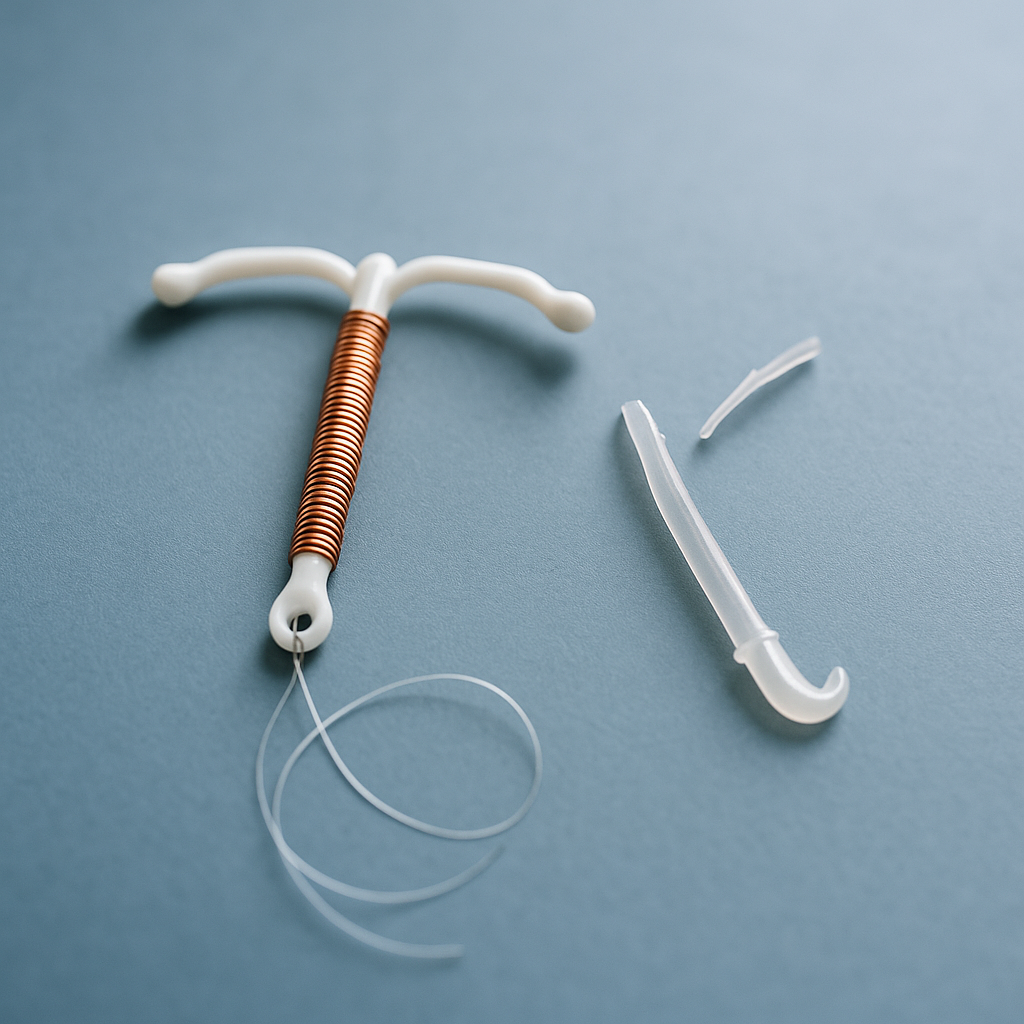The Paragard IUD lawsuit is a mass tort litigation that includes women who allege the copper intrauterine device (IUD) broke during removal or caused them significant injuries and trauma. Paragard is a T-shaped birth control device made of plastic and copper, intended to prevent pregnancy for a maximum of ten years. Thousands of women have now come forward with the exact allegation that the device broke inside their bodies, and they subsequently suffered surgery, infertility, and other serious health issues.
As of June 2025, plaintiffs have merged over 3,252 lawsuits into a multidistrict litigation (MDL 2974) in the Northern District of Georgia. They claim that Teva Pharmaceuticals and CooperSurgical failed to warn about the risks, knowingly released a defective product, and caused long-term harm. The court has officially ordered a bellwether trial, and settlement discussions are ongoing.
Why Are Women Filing the Paragard IUD Lawsuit?
Thousands of women are taking legal action against Paragard’s manufacturers due to serious complications caused by the IUD. These include pain, reproductive harm, disfigurement, and more.
Design Flaws and Breakage Risks
The device is marketed as safe and removable. However, users allege that Paragard’s plastic arms are too rigid. During removal, these arms often snap. This leaves fragments embedded in the uterus or other organs. This issue has affected patients even before the expiration date of the device, pointing to potential premature degradation of its materials.
Long-Term Complications
Injuries linked to Paragard include:
- Permanent reproductive harm
- Organ perforation
- Infections requiring antibiotics or hospitalization
- Hysterectomy or surgical removal of fragments
- Chronic pelvic pain
- Internal bleeding
- Infertility and emotional distress
Each injury leaves long-lasting physical and psychological scars. Many women are unable to conceive again or are forced into early menopause. The trauma affects relationships, mental health, and quality of life.
Case Example: Braxton v. Teva
In one pivotal case, Braxton, a defense-selected bellwether plaintiff, experienced IUD breakage during removal in 2019. She required emergency surgery. She claims permanent reproductive harm and scarring. Her case will set the tone for future settlements. If plaintiffs win this trial, even with the defense’s handpicked facts, it will strengthen other lawsuits significantly.
What Is the Latest in the Paragard IUD Lawsuit in 2025?
The following section summarizes the most significant case developments, trial updates, and court actions surrounding the Paragard IUD litigation.
Bellwether Trial Scheduled
As of May 2025, the first bellwether trial is set for January 12, 2026, with additional trials scheduled for March and May. The judge selected Braxton v. Teva, a defense pick. This shows confidence from manufacturers—but also carries high risk.
If plaintiffs win even this weaker case, it may pressure the defendants into settlement.
Surge in Case Filings
Over 216 new cases were filed in April alone, the highest monthly addition in over two years. As of now, 3,252 lawsuits are pending in the MDL.
This uptick suggests lawyers are anticipating a settlement window. Plaintiffs are rushing to file cases before potential deadlines are set.
Motion and Discovery Rulings
Several court decisions are shaping how the litigation unfolds:
- Plaintiffs won a key motion allowing 30(b)(6) depositions of corporate representatives.
- Final fact witness depositions are now being completed.
- The court denied motions to reconsider dismissals where plaintiffs failed to comply with management orders.
- Dozens of cases were dismissed based on statute of limitations, particularly where plaintiffs failed to respond to court deadlines.
These rulings show that the court expects full procedural compliance and is moving steadily toward trial.
Mediator Appointed
In January 2025, the court appointed retired Judge M. Gino Brogdon Sr. to mediate settlement negotiations. His role signals an intensified push to resolve the litigation efficiently and fairly.
Which Companies Are Being Sued?
The two main defendants are:
- Teva Pharmaceuticals: Original manufacturer of the Paragard IUD.
- CooperSurgical: Acquired Paragard and continued its distribution.
Allegations against them include:
- Marketing a defective medical device
- Failure to warn about breakage risks
- Negligence in product monitoring
Internal emails, corporate reports, and safety audits are expected to play a critical role in proving these allegations.
What Compensation Are Women Seeking?
Women filing lawsuits over the Paragard IUD are not just seeking justice—they are pursuing compensation for significant physical, emotional, and financial losses.
Damages Claimed
Victims of Paragard-related injuries are seeking multiple forms of compensation:
- Reimbursement for all medical expenses (including surgeries and hospitalizations)
- Lost wages or future earnings
- Pain and suffering
- Loss of consortium and companionship
- Emotional trauma
- Permanent disability or infertility
- Punitive damages to punish and deter negligence
Estimated Settlement Tiers
A global settlement may be offered as early as late 2025. Payouts will likely depend on severity of injury:
| Severity of Injury | Estimated Compensation |
|---|---|
| Minor pain, no surgery | $10,000 – $50,000 |
| Surgical removal, complications | $75,000 – $150,000 |
| Hysterectomy, infertility | $200,000 – $500,000+ |
These numbers are based on projections from firms like TorHoerman Law and past mass tort cases. Structured settlements may also be used to meet long-term medical and living needs.
How to File a Paragard IUD Lawsuit
If you’ve experienced complications from a Paragard IUD, understanding the filing process is crucial to protecting your legal rights and building a strong case.
Are You Eligible?
You may qualify if:
- You had a Paragard IUD implanted before 2022
- The device fractured during removal or caused internal injury
- You filed (or will file) your case within the statute of limitations
Even if surgery was not required, long-term pain, anxiety, or missed work could make you eligible for compensation.
What Evidence Should You Collect?
Collecting strong evidence increases your case’s chances:
- Medical records proving IUD insertion and removal
- Surgical reports if breakage occurred
- Imaging results (ultrasound, X-ray)
- Notes from follow-up doctor visits
- Documentation of job loss or wage disruption
- Journal entries or testimony describing emotional impact
Leading Law Firms
The following firms are leading the litigation:
- Miller & Zois
- Morgan & Morgan
- Beasley Allen
- TorHoerman Law
- Shapiro Legal Group
They handle Paragard IUD lawsuits nationwide, offering contingency-based services.
Common Questions About the Paragard IUD Lawsuit
What is the MDL about?
The Paragard MDL is designed to consolidate pretrial procedures in one court. This simplifies the process and promotes consistent rulings across cases. It’s not a class action—each plaintiff’s damages are considered individually.
Is there still time to file?
Yes—but the window may close soon. As trial dates approach and new filings surge, potential deadlines could cut off new claims.
What if I had a mild injury?
Even women with less severe outcomes may qualify if the IUD fractured and caused any disruption to health, work, or daily life.
What is the defense saying?
Teva and CooperSurgical argue that:
- The product is FDA-approved
- Breakage is rare and known
- The label includes appropriate warnings
However, plaintiffs counter that warning labels were vague until 2019 and failed to outline serious risks like infertility, surgery, or organ damage.
Conclusion
Thousands of women are driving the Paragard IUD lawsuit as a high-stakes legal movement to assert their reproductive health rights. With over 3,250 cases pending, key trials scheduled, and a mediator in place, the path to accountability is unfolding.
Teva and CooperSurgical face mounting evidence and growing pressure to settle. If you or someone you love suffered complications after a Paragard IUD fractured, don’t wait. Legal options are still available, and timely action could mean rightful compensation for years of pain.




